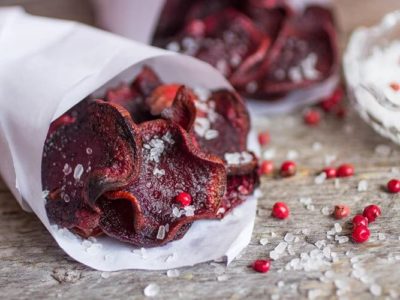Come January 1st, most people pick a diet plan, pay for a new gym membership, and do their best to totally transform their health. And most people, despite their best intentions, will struggle, and fail, through the winter to lose the weight and keep it off.
What they don’t know is that winter weight loss requires a very different set of foods and behaviors than dieting in warmer months. The best kept secret about proper winter weight loss? You can cleanse your organs, boost your energy, and drop the weight in a holistic, natural way that reconnects you to your best guide: your body.
Most cleanses, diets, and detox plans focus on freshly pressed vegetable juices, fruits, salads, and raw foods that are actually too cooling for the body in cold winter months.
The human body has evolved with the seasons to eat heavily in the fall harvest season and keep weight on the winter to protect from the cold and lack of food. If you’ve tried a juice cleanse in the winter before, you’ll know what I mean.
We naturally crave warming soups, cooked foods, and the fats to protect our organs and skin from biting winds, freezing temperature, and less sunlight.
Winter Weight Loss Tips
A well-planned winter weight loss cleanse will help you feel strong and warm, and help you drop the extra pounds without leaving you frail and cold. Here are our tops tips for cleansing in winter.
1. Eat For Warmth
When you’re physically cold, what sounds better: a chilled salad or a bowl of soup? See, you actually know your body better than you may think. Focus on the seasonal, local foods that grow near your home. For most of us, that means eating more naturally sweet, dense root vegetables, hearty winter greens, and quality animal products. Warming spices and herbs may also be used to ground and sustain your energy. Try our Warming Winter Broth recipe below.
Related
7 Ways to Enrich Your Life Through Seasonal Living
Discover the practice of season living! Learn to live in sync with the seasons through food, nature, gardening, moon cycles, seasonal rituals, and more.
2. Fats That Trim
Eat healthy fats to help your body soak up vitamins A, D and E, and for a healthy nervous system. That means when you eat the right fats, your mood is better. Eat a variety of monounsaturated, polyunsaturated, and the right saturated fats this winter, but avoid hydrogenated and trans fats that lurk in processed foods. Try olives, olive oil, almonds, avocados, salmon, walnuts, anchovies, flax seeds, hemp seeds, grass-fed butter, organic clarified butter, and unrefined coconut oil.
In fact, studies show that eating 2 tablespoons of unrefined coconut oil, rich in medium-chain-fatty-acids, with meals can boost body temperature and metabolism, helping to avoid the metabolic slow-down associated with winter dieting.
3. Sweets That Slim
We crave sweet and try to deny ourselves any added sugars when starting a new diet. This winter, eat a variety of naturally sweet, high-nutrient, seasonal vegetables to give you the sweet taste, satisfaction, and grounded, cozy energy you desire. Roast beets, bake sweet potatoes, and steam winter pumpkins and squash for their vitamins and mild natural sweetness, and it will be much easier to mute sugar’s siren call.
4. Sleep
Better sleep means better metabolism. Get more sleep this winter during the early, dark evening hours, and wake up earlier to catch every ray of sunlight possible. When you wake up early and get more morning sunlight, it has a positive affect on your sleep cycle. More sleep before midnight, especially in winter, helps your mood stay stable, stops you from midnight snacking, and improves the quality of your sleep.
Warming Winter Broth
Ingredients:
- 2 small or medium yellow onions, halved
- 5 stalks of celery, with leaves, roughly chopped
- 2 large carrots, roughly chopped
- One large leek, roughly chopped
- One large bunch of kale or bok choy, roughly chopped
- 2 parsnips, roughly chopped
- 2 large pieces of kombu or kelp sea vegetables
- 1 cup shiitake mushrooms, cleaned
- 2 inches fresh ginger, roughly chopped
Instructions:
- Combine all in a large pot and cover with enough cold, filtered water to cover.
- Bring to a boil. Lower heat to a simmer with the lid on for one hour.
- Turn off the heat, give your broth time to cool to a point where you can comfortably handle it, then strain through a fine meshed strainer. You can use a large spoon or spatula to squeeze liquid and nutrients out of soft veggies.
- Be sure not to transfer hot broth to a glass container, but this broth can be refrigerated for a week in sealed glass jars.





